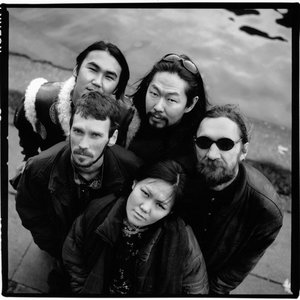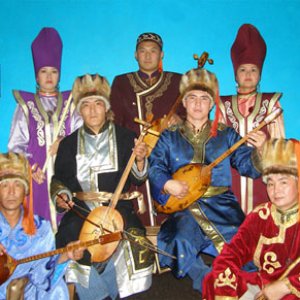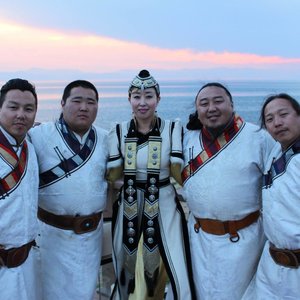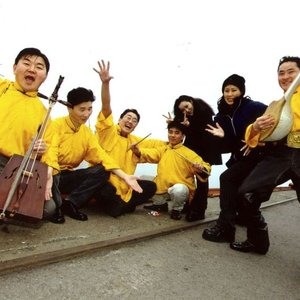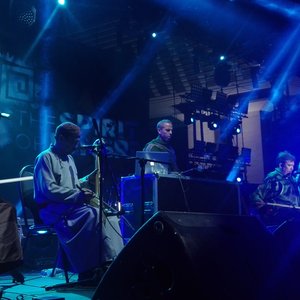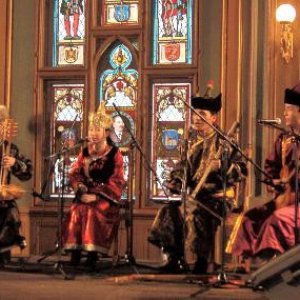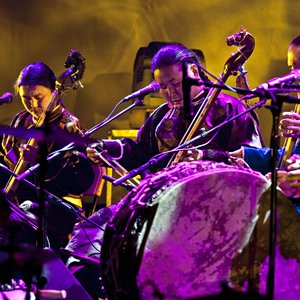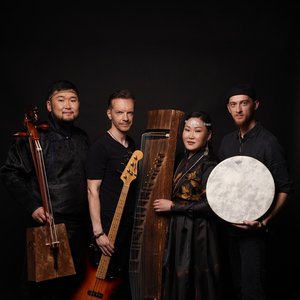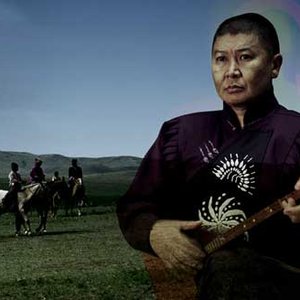Biography
-
Years Active
1992 – present (32 years)
-
Founded In
Respublika Tyva, Russian Federation
-
Members
- Alexander Bapa (1992 – 1994)
- Alexei Saryglar (1995 – present)
- Kaigal-ool Khovalyg (1992 – present)
- Radik Tülüsh (2005 – present)
- Sayan Bapa (1992 – present)
Huun-Huur-Tu is a throat singing group from the semi-autonomous Tuva Republic, Russian Federation, which is situated north of Chinese Turkestan, to the west of the Mongolian border. The Tuvan throat singing technique creates multiple notes at the same time. This is done by manipulating the harmonics to amplify different overtones within their mouth, throat, and belly when they are singing, and is referred to as Khoomei in its native Tuva.
In 1992 Kaigal-ool Khovalyg, Alexander Bapa, his brother Sayan Bapa, and Albert Kuvezin founded the quartet Kungurtuk, as a means of concentrating on the presentation of traditional songs of their homeland. The musicians later decided to rename the ensemble Huun-Huur-Tu. After the first album 60 Horses in my Herd (1993), Kuvezin left the band to form the more rock-oriented Yat-Kha. Kuvezin was replaced by Anatoli Kuular, who had previously worked with Khovalyg and Kongar-ool Ondar as part of the Tuva Ensemble. In 1995, Alexander Bapa, who had produced the first two albums, departed the band to pursue production as a full-time career. He was replaced by Alexei Saryglar. In 2003 Kuular quit the band and was replaced by Andrey Mongush.
The name Huun-Huur-Tu (sometimes spelled without hyphens) translates literally to "Sun Propeller," a Tuvan term referring to the special kind of light you can see streaming down through the clouds at dawn or down through densely leaved trees at noon.
The most distinctive characteristic of Huun Huur Tu's music is throat singing, in which the singers sing both the note (drone) and the drone's overtone(s), thus producing two or three notes simultaneously. The overtone may sound like a flute, whistle or bird, but is solely a product of the human voice.
The group primarily uses native Tuvan instruments such as the igil, khomus (Tuvan jaw harp), doshpuluur, and dünggür (shaman drum). However, in recent years, the group has begun to selectively incorporate western instruments, such as the guitar. While the thrust of Huun Huur Tu's music is fundamentally indigenous Tuvan folk music, they also experiment with incorporating not only Western instruments, but electronic music as well.
Their website is http://www.hhtmusic.com
Artist descriptions on Last.fm are editable by everyone. Feel free to contribute!
All user-contributed text on this page is available under the Creative Commons Attribution-ShareAlike License; additional terms may apply.


